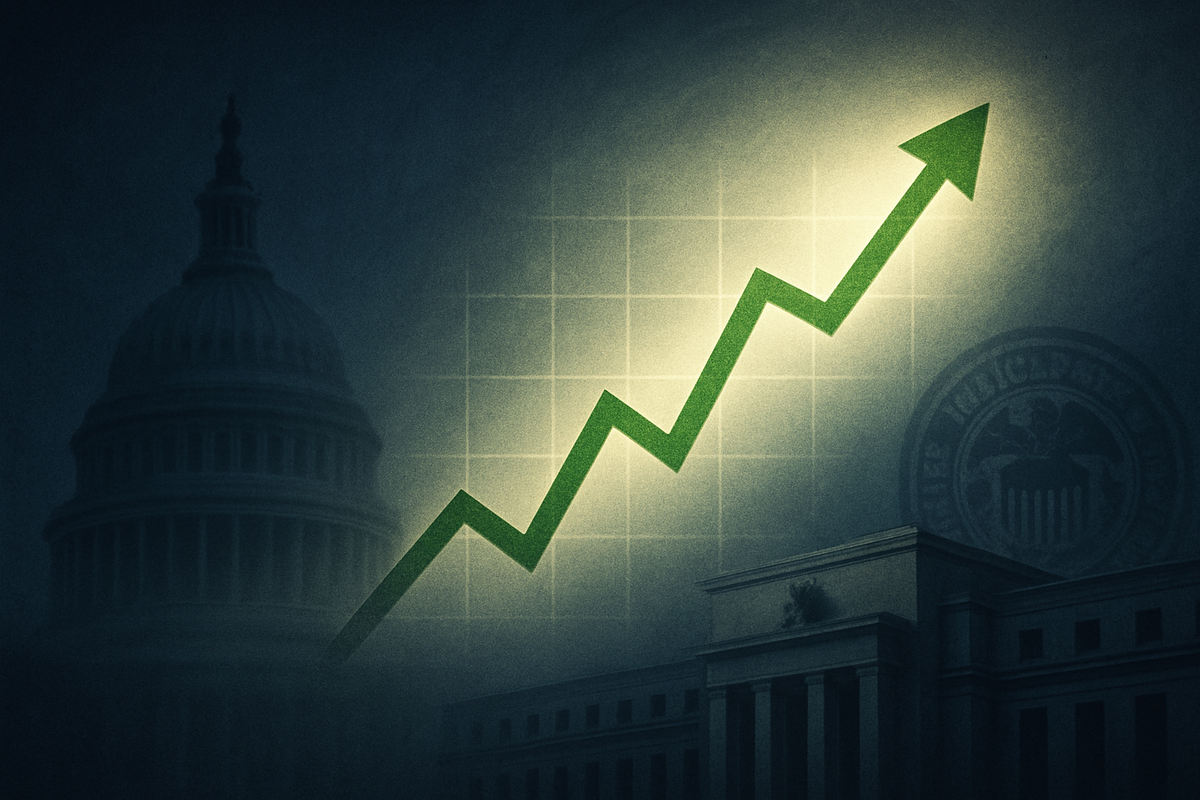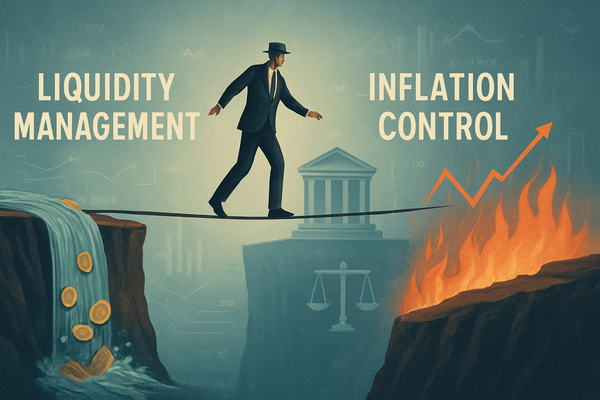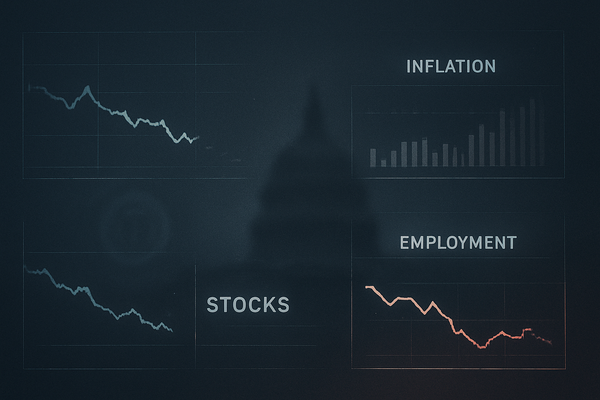US Jobs Data Release: A Critical Barometer for Post-Shutdown Economic Recovery

Washington D.C., November 10, 2025 – With the longest government shutdown in U.S. history recently concluded, financial markets and policymakers alike are bracing for the highly anticipated release of key US Jobs Data. This critical economic indicator, delayed by weeks of fiscal impasse, will provide the first official glimpse into the nation's labor market's health, offering much-needed clarity for the Federal Reserve's policy decisions and the overall economic outlook. The resolution of the shutdown has already sparked a "relief rally" in the markets, but the true underlying economic conditions remain shrouded in uncertainty, making this data release exceptionally significant.
The immediate implications of this data influx are profound. A government shutdown halts the collection and publication of crucial economic statistics, including the monthly jobs report, creating an "information gap" that fuels market nervousness and leaves policymakers "operating blind." The impending "avalanche" of catch-up reports is expected to cause significant market volatility as investors react to the backlogged information. The jobs report, a bellwether for the US economy, will provide the first comprehensive look at the labor market, informing broader economic outlooks regarding growth prospects or recession fears. For the Federal Reserve, which operates under a "data-dependent" framework, this data is paramount for guiding interest rate decisions and addressing its dual mandate of maximum employment and price stability. Without it, the Fed has been forced to adopt a more cautious stance, complicating its ability to make informed adjustments.
Detailed Coverage: Unveiling the Economic Picture Post-Shutdown
The recent government shutdown, which commenced around October 1, 2025, and concluded by November 10, 2025, led to an unprecedented suspension of vital economic data releases by federal agencies, most notably the Bureau of Labor Statistics (BLS). This halt meant that the September jobs report, typically due the first Friday of October, was immediately delayed, and data collection for the October report was severely impacted, potentially leading to incomplete or permanently lost information. This extended data blackout has created a significant challenge for assessing the true state of the economy.
Historically, such shutdowns have repeatedly interrupted the release of economic data. During the 2013 government shutdown, the September jobs report was delayed but released within a week of the government reopening. Similarly, the 1995-1996 shutdown caused delays in the December 1995 jobs report. However, the current hypothetical 2025 shutdown is notable for its prolonged duration, potentially making it the longest on record. This extended period has amplified concerns about the quality and timeliness of the data that will eventually emerge. Upon the shutdown's conclusion, the BLS will prioritize the release of the most recent complete jobs report (likely September's), followed by efforts to compile data for the months affected by the shutdown. This catch-up process could take weeks, and the reliability of retrospectively gathered data for October might be questioned.
Key players deeply involved in this process include the Bureau of Labor Statistics (BLS), the primary entity responsible for the jobs report; the Federal Reserve (The Fed), which relies heavily on this data for monetary policy; economists and analysts who use the data for forecasting; and the financial markets (investors, traders) who react to its implications. Without official government statistics, market participants and policymakers have turned to alternative, private data sources like the ADP National Employment Report, though these do not offer the same comprehensiveness or authority as BLS data. Initial market reactions to delayed data during shutdowns have been mixed, with some historical precedents showing markets looking past the initial delays. However, the prolonged nature of this shutdown and the current economic climate suggest that the eventual data release could trigger significant volatility.
Companies and Sectors: Winners and Losers in the Data Reveal
The release of the delayed US jobs data, coupled with the Federal Reserve's subsequent policy decisions, will undoubtedly create winners and losers across various public companies and sectors. As of November 10, 2025, with the shutdown recently concluded, the market is highly sensitive to whether the data signals economic resilience or further weakening.
Scenario 1: Strong US Jobs Data
A surprisingly robust jobs report, indicating healthy job creation and wage growth, would signal underlying economic strength. This would likely prompt the Federal Reserve to pause or slow down further interest rate cuts, potentially even considering rate hikes if inflation concerns are reignited. In this hawkish environment, sectors that tend to benefit from higher interest rates and a strong economy include:
- Financials: Banks like Bank of America (NYSE: BAC), JPMorgan Chase (NYSE: JPM), and Goldman Sachs (NYSE: GS) often see expanded profit margins from increased interest spreads on loans. Insurance companies and brokerage firms also tend to thrive.
- Industrials: Companies in construction, manufacturing, and machinery, while sensitive to borrowing costs, would benefit from strong demand in a robust economy.
- Energy: Energy stocks can be supported by higher oil prices, which often accompany economic growth and inflationary pressures.
Conversely, sectors that might struggle in a strong data scenario with higher rates include:
- Highly Leveraged Companies: Businesses with significant variable-rate debt would face increased interest expenses, impacting profitability.
- Growth Stocks: Many technology and biotech companies, relying on future earnings potential, see their valuations diminish as higher interest rates reduce the present value of those earnings.
- Real Estate and Utilities: These capital-intensive sectors are highly sensitive to interest rates, with higher borrowing costs potentially slowing growth and impacting profitability.
Scenario 2: Weak US Jobs Data
A weak jobs report, showing slowing job creation or rising unemployment, would reinforce the Federal Reserve's dovish stance, likely leading to further interest rate cuts to stimulate economic activity. This scenario could also fuel recession concerns. In such an environment, sectors that could benefit from lower rates include:
- Rate-Cut Sensitive Sectors: Small-cap stocks, which often have higher borrowing costs, could see boosted profitability. The housing sector, including homebuilders like D.R. Horton (NYSE: DHI) and construction suppliers, would benefit from more affordable mortgages.
- Technology: Many growth-oriented tech companies, such as Microsoft (NASDAQ: MSFT) or Apple (NASDAQ: AAPL), rely on borrowing for R&D and expansion, making lower borrowing costs advantageous.
- Real Estate: Lower interest rates can unlock the housing market by making mortgages more affordable, stimulating homebuying and renovation activity. REITs could also benefit from economic growth that supports rent collections.
- Bonds and Gold: In a weakening economic environment with potential rate cuts, fixed-income assets and safe-haven assets like gold tend to perform well.
Sectors that might underperform in a weak data scenario with lower rates include:
- Financials (Banks): Lower interest rates can compress net interest margins, potentially reducing profitability for banks.
- Consumer Staples and Healthcare: These defensive sectors, while generally stable, might see relatively weaker performance compared to growth-oriented sectors that benefit more significantly from rate cuts.
The government shutdown context amplifies these impacts. The data blackout created immense uncertainty, making the eventual jobs data release even more critical. The shutdown itself also acted as an economic drag, potentially exacerbating any underlying economic weakness and complicating the Fed's ability to react swiftly and appropriately.
Wider Significance: Beyond the Numbers
The release of post-shutdown jobs data carries profound wider significance, extending beyond immediate market reactions to influence broader industry trends, international relations, and future policy frameworks. The period leading up to the hypothetical October-November 2025 government shutdown was already characterized by a cooling US labor market, with moderating job growth and surging layoffs. This context suggests a "slow hiring, slow firing" economy, or even a potential downturn, making the delayed data even more crucial for validating or refuting these trends.
The shutdown itself, particularly if prolonged, has a measurable impact on GDP, with each week subtracting 0.1 to 0.2 percentage points from annualized growth. Industries heavily reliant on federal contracts, regulatory approvals, or funding, such as aerospace and defense (e.g., Lockheed Martin (NYSE: LMT), Boeing (NYSE: BA)), biotech, and energy, face chronic instability and operational delays. This instability can ripple through global supply chains, impacting the availability of goods and services.
Internationally, weak US jobs data can trigger volatility in global markets, influencing bond yields, currency valuations, and equity market sentiment. Concerns about a cooling US labor market and increased expectations for Federal Reserve interest rate cuts often lead to a depreciation of the US dollar. While a weaker dollar can benefit emerging markets by reducing dollar-denominated debt costs and boosting exports, broader factors like trade tensions and geopolitical instability can complicate this dynamic. Government shutdowns also erode trust in US governance and fiscal stability, potentially leading to postponed foreign direct investment decisions by global partners and a cautious approach from international investors. International competitors may perceive US political instability as an opportunity to gain an advantage in critical sectors.
For policymakers, especially the Federal Reserve, the delayed or missing economic data critically hampers their ability to make informed monetary policy decisions. Operating "blind" in an environment of conflicting signals makes the Fed's path more challenging. The recurring nature of shutdowns highlights ongoing challenges in fiscal policy and budgeting, underscoring the need for more stable government funding. Regulatory agencies also face significant backlogs in approvals for IPOs, drug trials, environmental permits, and mergers and acquisitions, impacting affected sectors for months. In the absence of official government statistics, there's an increased reliance on alternative, private-sector data sources, though these are not perfect substitutes for comprehensive official data.
Historically, while short shutdowns have generally had minimal economic impacts, prolonged ones, like those in 2013 and 2018-2019, caused more noticeable disruptions to GDP and consumer confidence. A key difference in the current (hypothetical 2025) scenario compared to some past shutdowns is the heightened concern about permanent layoffs among federal workers and contractors, rather than just furloughs with back pay. This could represent a more severe and lasting impact on the labor market and consumer spending.
What Comes Next: Navigating the Recovery
Following the recent conclusion of the government shutdown, the U.S. economy enters a crucial period of adjustment and recovery, with the impending release of jobs data serving as a vital compass. The immediate aftermath will be characterized by a deluge of delayed economic statistics, and the short-term outlook anticipates a quick rebound as federal operations normalize and furloughed employees receive back pay. Historically, markets have shown a "relief rally" after shutdowns, with equity markets typically recovering losses within a month. However, the true test lies in the underlying economic health revealed by the data.
In the long term, the recurring nature of government shutdowns poses a threat to overall economic stability and consumer confidence, making sustained long-term planning challenging for businesses. Permanent gaps in economic data time series could also hamper robust long-term economic analysis.
Strategic Pivots for Businesses: Businesses heavily reliant on government contracts should prioritize diversification of revenue streams. Maintaining robust cash reserves and securing confirmed credit lines are crucial for weathering potential payment disruptions. Clear communication with employees and clients is vital, and contingency planning, including funding clauses in contracts, can mitigate risks.
Strategic Adaptations for Policymakers: To prevent future disruptions, policymakers must focus on resolving underlying political and budgetary disagreements. The Federal Reserve will likely maintain a data-dependent yet cautious approach to monetary policy, recognizing that delayed or incomplete data can obscure the true state of the economy. Support mechanisms for furloughed federal employees and small businesses will be critical in mitigating economic hardship.
Market Opportunities and Challenges: Periods of market volatility during shutdowns can present "buying opportunities" for tactical investors. Defensive sectors like utilities and consumer staples have historically shown relative resilience. However, the "data blackout" remains a significant challenge, increasing uncertainty for investors. Sector-specific impacts, particularly for small and mid-market businesses dependent on federal interactions, could lead to protracted recoveries. Dealmaking, including mergers, acquisitions, and IPOs, may also face delays due to halted regulatory approvals.
Potential Scenarios and Outcomes:
- Swift, but Incomplete, Recovery (Base Case): A rapid rebound in economic activity as federal agencies normalize operations and back wages are paid. Financial markets maintain their relief rally, but some economic activity is permanently lost, leading to a small but lasting drag on GDP.
- Lingering Data Fog and Cautious Fed: If data collection for October was severely hampered, the Federal Reserve might continue to operate with limited visibility, potentially delaying anticipated rate cuts until a clearer economic picture emerges.
- Exacerbated Economic Slowdown: If the economy was already fragile before the shutdown, the prolonged impasse could deepen these weaknesses, leading to a more significant downturn, especially if consumer and business sentiment were severely impacted.
- Increased Political Risk and Fiscal Scrutiny: Recurring shutdowns could lead to increased calls for structural reforms in budget processes but also risk further undermining investor confidence in U.S. fiscal stability.
Comprehensive Wrap-up: Navigating the Post-Shutdown Landscape
The resolution of the government shutdown marks a pivotal moment, ushering in an era of heightened scrutiny on economic data. The forthcoming US Jobs Data release is far more than a routine announcement; it is a critical barometer for the resilience of the U.S. economy and a direct measure of the shutdown's real-world consequences. It will reveal the depth of the impact on hiring, unemployment rates, and wage growth, shedding light on whether temporary disruptions led to structural weaknesses or if the economy largely weathered the storm.
The market's immediate "relief rally" is a testament to the unwinding of political uncertainty. However, sustained market performance in the coming months will hinge critically on the actual contents of the jobs report and the Federal Reserve's interpretation. A stronger report might temper expectations for immediate rate cuts, while a weaker one could increase the likelihood of the Fed easing its policy sooner.
Beyond the immediate numbers, the lasting impact of this prolonged shutdown includes a potential dent in consumer and business confidence, alongside a heightened awareness of the economic costs of political gridlock. This episode underscores the critical importance of reliable and timely economic data for informed decision-making across all sectors.
What Investors Should Watch For in Coming Months:
- Job Creation Numbers (Nonfarm Payrolls): A key indicator for the pace of labor market recovery.
- Unemployment Rate and Labor Force Participation Rate: These figures will reveal the health of labor supply and demand.
- Wage Growth (Average Hourly Earnings): Strong wage growth could signal inflationary pressures, influencing the Fed's stance.
- Sector-Specific Performance: Analyze which industries are adding or losing jobs to identify areas of resilience or weakness.
- Federal Reserve Commentary: Closely monitor statements from Fed officials for their interpretation of the data and any shifts in monetary policy outlook.
- Revisions to Past Data: Significant revisions to previous months' data will be crucial for understanding the true trajectory of the labor market.
The coming months will be a period of recalibration for financial markets as the full economic picture emerges from the shadow of the government shutdown. While an initial "relief rally" is underway, sustained market performance will ultimately depend on robust economic fundamentals, particularly a healthy and growing labor market.
This content is intended for informational purposes only and is not financial advice



